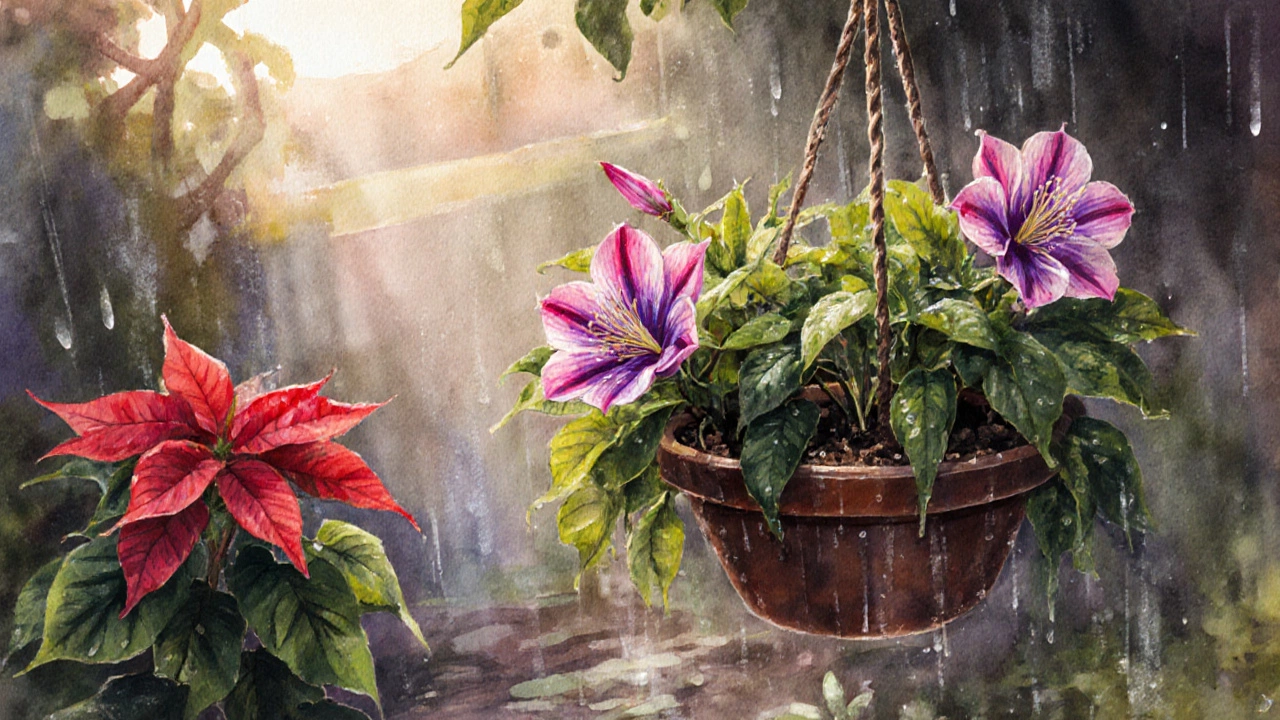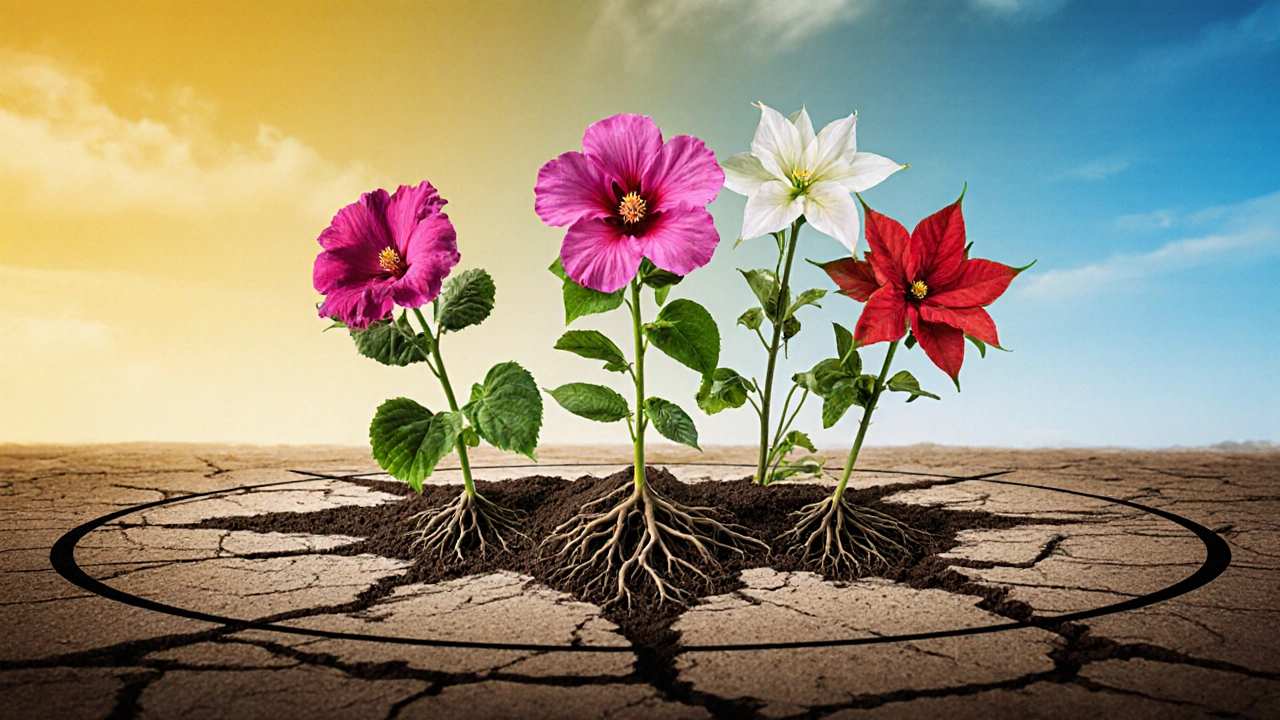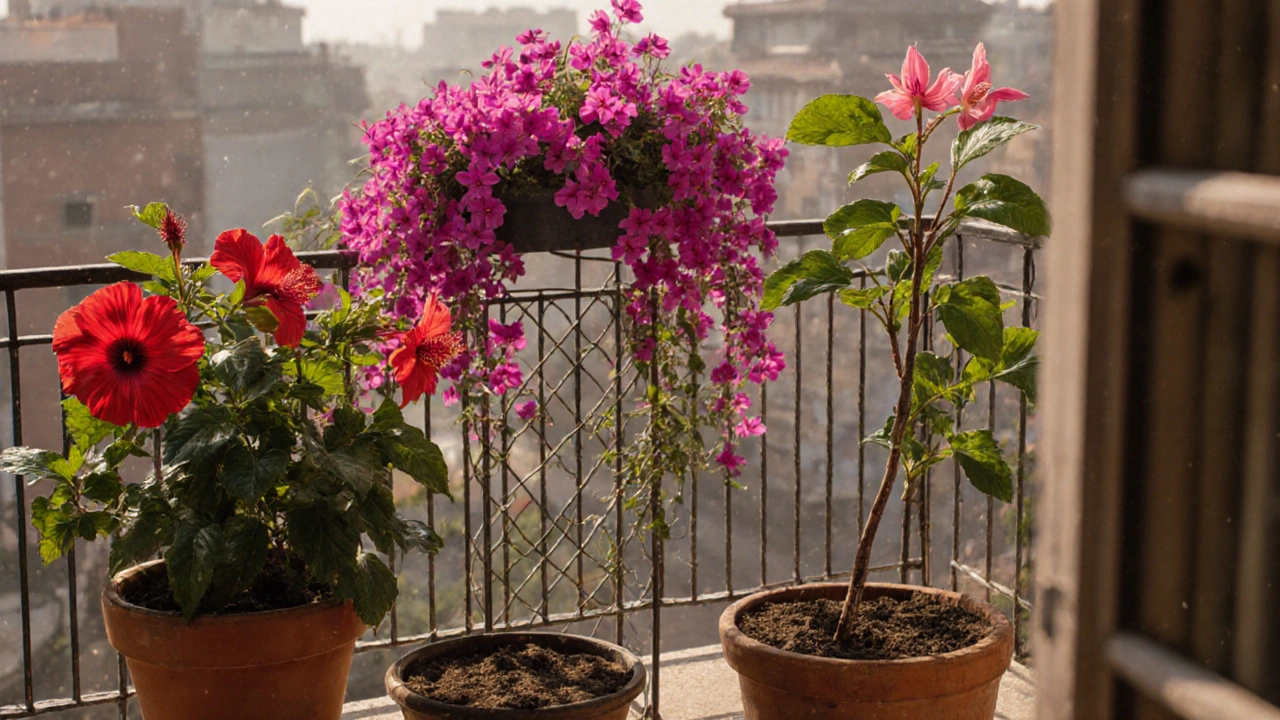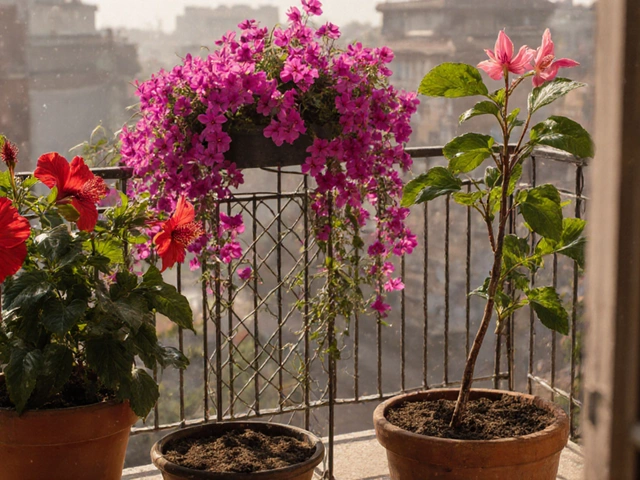If you’ve ever stared at your garden in December and wished something was still blooming, you’re not alone. In India, where summers scorch and winters feel like a pause button, finding plants that don’t quit is a game-changer. The truth? There’s no single plant that blooms nonstop from January to December everywhere-but several tough, adaptable species keep flowering through nearly every season, no matter if you’re in Delhi, Chennai, or Bangalore.
What Makes a Plant Truly All-Season?
Not all greenery that sticks around is a true all-season bloomer. Some plants keep their leaves year-round (evergreen), but that doesn’t mean they flower constantly. True all-season plants in India deliver color, texture, or both, through multiple seasons-sometimes with a brief lull, but never a total blackout. They handle heat, monsoon floods, dry spells, and even light frost without collapsing.
These plants aren’t fancy. They don’t need daily watering or special soil. They thrive on neglect. And they’re the reason your neighbor’s balcony still looks alive in February when everyone else’s is brown.
Top 5 Plants That Flower Almost Year-Round in India
- Hibiscus rosa-sinensis - This is the most reliable bloomer in Indian gardens. It doesn’t care if it’s 40°C in May or 18°C in December. Give it full sun, occasional water, and a pinch of compost every two months, and it’ll throw out flowers every 3-5 days. The flowers come in red, pink, yellow, and white. Even in Delhi’s chilly winters, it keeps going-just slower.
- Bougainvillea - A vine that looks like it’s on fire. It blooms in flushes, not daily, but it rarely stops entirely. In warmer parts of India, it flowers nonstop. In colder zones, it takes a 4-6 week break in December-January, then bursts back. It thrives in pots, on walls, and even in cracked concrete. No fertilizer? Still blooms. No water for a week? Still blooms.
- Adenium obesum (Desert Rose) - Looks like a bonsai from a sci-fi movie. Thick trunk, glossy leaves, and trumpet-shaped flowers in pink, red, or white. It’s a succulent, so it stores water. In summer, it explodes. In winter, it slows down but rarely goes bare. In pots, it’s perfect for balconies. It doesn’t like wet feet, so drainage is key.
- Mirabilis jalapa (Four O’Clock Flower) - Named because it opens in the late afternoon. But don’t let that fool you. It blooms from spring through late autumn, and in frost-free zones like Kerala or Goa, it keeps going into winter. The flowers come in streaked colors-pink, yellow, purple-and smell sweet at night. It self-seeds, so once you plant it, it comes back.
- Poinsettia (Euphorbia pulcherrima) - People think it’s just a Christmas plant. But in India, it’s a year-round performer. In the south, it flowers nonstop. In the north, it takes a break in December but restarts by February. It’s not fussy about sun-partial shade works too. Keep it slightly dry, and it rewards you with bright red or white bracts that look like petals.
Why These Plants Work When Others Don’t
These five plants share three traits that make them winners:
- Deep roots - They dig down past the dry topsoil to find moisture. That’s why they survive 10-day dry spells when petunias turn to dust.
- Native or naturalized - They didn’t come from Canada or Sweden. They evolved in climates similar to India’s. That means they’re built for monsoons, heat, and seasonal swings.
- Low nutrient needs - You don’t need to feed them monthly. A handful of compost in spring and one more in monsoon is enough. Over-fertilizing actually kills them.
Compare that to roses, which demand weekly feeding, pest sprays, and perfect drainage. Or marigolds, which die after 60 days. These five? They’re the marathon runners of the plant world.

What Doesn’t Work as an All-Season Plant
Don’t be fooled by labels like “perennial” or “evergreen.” Many plants sold as year-round bloomers in nurseries are seasonal imposters.
- Chrysanthemums - They bloom in autumn, then vanish. Not year-round.
- Lantana - Great in summer, but freezes back in north India. Needs replanting.
- Jasmine - Fragrant, yes. But it flowers in waves: spring and monsoon. Long gaps in between.
- Marigolds - One of the most popular Indian flowers. Lasts 60-90 days. Then it’s done.
These aren’t bad plants. They just aren’t all-season. Don’t waste money on them if your goal is constant color.
How to Grow Them Without Effort
You don’t need a green thumb. You just need to follow three rules:
- Plant in sun - At least 5-6 hours of direct sunlight daily. Even bougainvillea in partial shade will flower, but sparsely.
- Use good drainage - Most of these hate soggy soil. Mix sand or gravel into potting mix. If planting in ground, raise the bed a few inches.
- Water only when dry - Stick your finger 2 inches into the soil. If it’s dry, water. If not, wait. Overwatering kills more of these plants than under-watering.
Pruning? Optional. A light trim in February helps shape them, but they’ll bloom even if you ignore them.
Best for Balconies, Terraces, and Small Spaces
Most of these plants grow well in pots. For balconies and terraces:
- Use 12-18 inch pots. Smaller pots dry out too fast.
- Choose terracotta or plastic with drainage holes.
- Use a mix of 60% garden soil, 30% compost, and 10% sand.
- Group them together. They create micro-humidity and look fuller.
Hibiscus and adenium look stunning in matching pots. Bougainvillea climbs trellises or spills over edges. Mirabilis works well in hanging baskets. Poinsettia is perfect as a single statement plant on a side table.

What to Do in Winter
In north India, where temperatures dip below 10°C, these plants slow down-but they don’t die. Here’s how to help them:
- Move potted plants near a south-facing wall. It stays warmer.
- Reduce watering to once every 10-14 days.
- Don’t prune in December. Wait until February.
- Keep them away from AC vents or open windows.
In south India, where winters are mild, they barely notice the change. Just keep watering when the soil dries.
Real-Life Example: A Delhi Balcony That Never Goes Bare
Meet Priya’s 5x8 foot balcony in Dwarka. She planted:
- One hibiscus in a 16-inch pot
- Two bougainvillea vines on a wire trellis
- One adenium on a raised stand
- One mirabilis in a hanging basket
She waters twice a week in summer, once every 10 days in winter. No fertilizer. No pesticides. In 2024, it bloomed every single month. Visitors assume she’s a pro. She just picked the right plants.
Final Tip: Start with One, Then Add
Don’t rush. Buy one hibiscus this month. Watch it bloom. Learn its rhythm. Next month, add a bougainvillea. In three months, you’ll have a balcony that never looks empty. That’s the secret-not buying everything at once, but building slowly with plants that don’t quit.
Can any plant bloom all year in cold Indian winters?
No plant blooms continuously in freezing temperatures, but hibiscus, bougainvillea, and poinsettia can survive and flower through mild winters in most parts of India. In places like Delhi or Lucknow, they slow down in December-January but restart by February. In southern cities, they bloom year-round with little interruption.
Do all-season plants need a lot of water?
No. Most of these plants are drought-tolerant. Hibiscus and bougainvillea prefer to dry out between waterings. Overwatering causes root rot. Water only when the top 2 inches of soil feel dry. In winter, you might water once every two weeks.
Are these plants safe for pets?
Hibiscus and bougainvillea are non-toxic to cats and dogs. Adenium and poinsettia are mildly toxic if ingested-they can cause stomach upset. Keep them out of reach of curious pets. Mirabilis is safe. Always supervise pets around new plants.
Can I grow all-season plants in shade?
Most need at least 5-6 hours of direct sun. Bougainvillea and hibiscus will flower weakly in partial shade. Poinsettia can tolerate light shade, especially in hot climates. Avoid deep shade-no plant will bloom well there. If your space is shady, choose leafy evergreens like pothos instead.
Which of these is easiest for beginners?
Hibiscus is the easiest. It’s forgiving, widely available, and blooms even if you forget to water it for a week. Bougainvillea is close behind-it’s almost impossible to kill. Start with one of these, and you’ll gain confidence fast.


